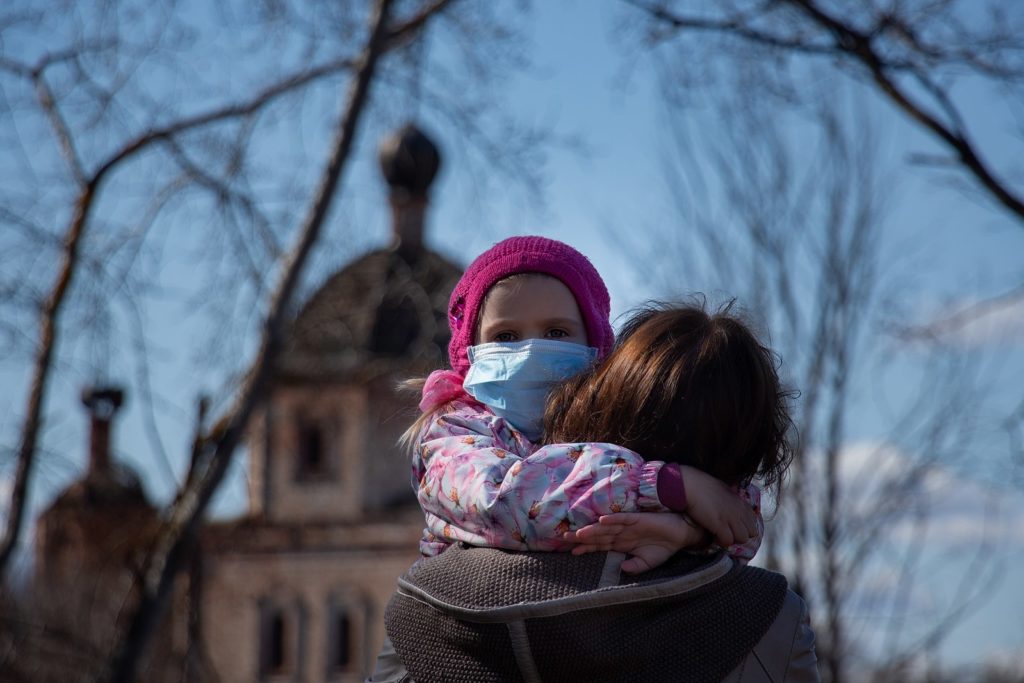When it comes to knowing what’s next with the pandemic, I’ve found the following two methods have yet to let me down:
- I keep close tabs on what infectious disease experts are saying, and
- I regularly mask up and go outside to look around.
For the first method — listening to experts — part of my secret sauce is checking in on Michael Osterholm’s CIDRAP podcast from the University of Minnesota’s Center for Infectious Disease Research and Policy. Osterholm has been consistently on-target since the outset if this pandemic, and the latest episode of the podcast is no exception.
Among the many important points he makes is one that I saw ample evidence for in a recent supply run into town here in central Texas: the resurgence in cases we’re seeing in Texas and other states is probably just the first spike of many to come. The case numbers will ramp up, then go back down as we intervene, then ramp up again when we relax the measures, and then the cycle will repeat itself.
This oscillation in the viral spread will continue until we either reach herd immunity or we get a vaccine.
Osterholm is right about this, and I know it because I went outside and confirmed it.
Looking at the past
To understand how looking around you tells you what will happen in the future, you first have to be aware of the many delays behind the COVID-19 stats we’re all following.
- There’s a one to two week delay in death reporting
- Test results are delayed three to five days in some areas. (My dad in Louisiana waited almost two weeks for his results.)
- Test totals are delayed in the official counts by at least a day or two, especially over the weekend.
- There’s a few days worth of lag between initial infection and onset of symptoms.
- There’s a few days more time between onset of symptoms and hospitalization.
- There’s a three to four week lag between when someone is admitted to the hospital and when they die.
These delays and other stack together in different ways to give different total lag times for different stats, but the main takeaway is this: looking at any COVID-19 chart or curve is looking a week or more into the past.
This is true for all the numbers that matter — case counts, fatalities, hospital beds, ICU capacity, etc. All these curves reflect infections, behaviors, and conditions that were happening a week or more before the numbers show up in whatever online dashboard you’re looking at.
We’ve known this for a long time. COVID-19 has a typical incubation period of 5-6 days before symptoms appear, according to the WHO. Some people are pre-symptomatic for 14 days. During this incubation period, infected people can still spread the virus. We know this, but we sometimes forget about the incubation period when we look at charts online. We expect the numbers to be of the moment and forget that the behaviors that caused those numbers—the eating in restaurants and the mask-less socializing—happened a week before case counts change.
For example, take my own state, Texas, where case counts are ramping up in a major way. We seem on the verge of a major, sustained vertical climb in cases, like Florida. All this present growth reflects the behavior of about two weeks ago, and none of it surprises me because two weeks ago when I went out people were in full, manic YOLO mode. Eating, shopping, barhopping, and nary a mask in sight in most places.
Today, I saw the future
This lag effect works both ways. If you run outside and take a look right now, you can get an idea of what the curves in your immediate area will look like in a few weeks.
Today I went out on a brief shopping run, and there was almost universal mask usage (with one ornery exception) in the Tractor Supply. I don’t know how much you know about Tractor Supply and the kinds of folks who, like my family, buy hay and farm supplies there, but let’s just say it has historically not been a mask-wearing demographic. But the people I saw in there today were masked up, young and old.
Across the way, there were masked faces going in and out of the Hobby Lobby. *Ahem* The Hobby Lobby. In general, the few times my wife and I have been out the past three days, we’ve seen a ton more mask usage in our relatively mask-hostile neck of the woods.
I’ve also seen other shifts in the social networks I belong to, both online and in real life. Online, I see a lot fewer anti-mask memes circulating in local groups. My church in Austin began requiring masks the week before last, and then last week went back to online-only services.
If these behavior changes are truly widespread, then in another few weeks we should see things turn back in a better direction.
It’s like Osterholm says in the podcast — we could end up seeing cases spike, then we’ll intervene again to tamp them down, and then we’ll think we’re winning and quit trying, and then they’ll spike again.
Every city in America could be on this case count roller coaster until the virus either burns its way through the entire population or we get a vaccine available in volume.
More: State of the Pandemic, June 2020, Part III: Current events and the future
I guess it’s possible that this latest spike could really cause such a durable change in everyone’s behavior that we keep things more or less under permanent control, but I’m not even a little optimistic. Our capitalist society is powerfully biased at every level toward openness and indoor interaction. It’s just the way things are wired in the United States, so the economic incentives and other structural forces pushing us back into all kinds of close, indoors contact with one another are durable and extremely powerful.
Fear of infection and hospitalization or death might hold those forces back for a limited time in a limited geography, but the minute the case count drops in an area, people will go back out and begin doing the kinds of things that make it rise again.
What this means for prepping
Given that we’ll oscillate between periods of relative normality and total COVID-19 overload, you should plan on taking advantage of the times when case counts are low and people are out running wild.
During normal periods, top off your supplies, and do whatever things you need to do while the shops are open (e.g. car and appliance repairs, shopping for essentials, medical procedures).
Then, when it’s time to lock back down, focus on staying in and saving your money, so that when the next relaxation period comes you can run out and stock up, once again.
Rinse and repeat, until we either get a vaccine or the virus is done with us.


You are reporting the comment """ by on